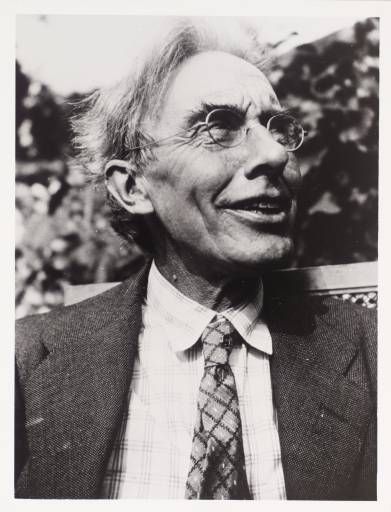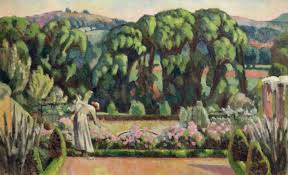
1866 - 1934
Roger Eliot Fry

description
A prominent English artist, a famous art critic and theorist, who is considered the author of such a term as post-impressionism, as well as the forerunner of a special kind of British Futurism – Vorticism.
Becoming interested in French art movements, Roger Fry was able to organize an exhibition in London with paintings of several artists from Parisian groups. Despite harsh criticism, the artist repeated such an exposition two years later and thereby helped Post-impressionism and Cubism “to storm” British fine art. The artist depicted the second exhibition; that painting is now included in the collection of the Paris Orsay Museum.
Of great importance for the formation of the British avant-garde was the work of the «Omega Workshops», a design studio organized by Fry, where representatives of the national avant-garde such as W. Bell, W. Lewis, D. Grant, and W. Roberts, began their careers.
Professor and art historian Roger Eliot Fry wrote theoretical works, essays and lectures, which were very popular not only in the UK but also had a significant influence on many artists as well as art historians from around the world. Among the books characterized by the clarity of prose, in which the author demonstrated his brilliant knowledge of history and extraordinary analytical abilities, there is his study of the work of Paul Cezanne, Henri Matisse and others.
Key ideas:
– The artist, who initially specialized in realistic landscape painting, discovered the ideas of the Impressionists, the work of Paul Cezanne and the Fauvists during his trip to France. After that, he did not get tired of experimenting with various modern styles, although he never turned to a complete rejection of Realism.
– In portraits, following the British tradition, Fry, under the influence of post-Impressionism, refused from details and strict rules of academism in building a composition.
– Fry paid much attention to the relative position of the figures, their relation to the background – that surrounding space, which he called the cosmos of each work.
– As the initiator of creation and the organizer of classes at the design studio with regular seminars “Omega Workshops”, where future British innovators and avant-garde artists worked, Roger insisted on introducing a synthesis of visual arts, that is, on the use of techniques used in the architectural appearance of objects and interior decoration in painting. The artist dedicated his book “Vision and Design” to this problem.
– According to the figurative expression of the critic, “modernism, which excited the minds of the whole Europe, finally took the British kingdom by storm”, and this happened to a great extent thanks to the efforts of Roger Fry, who put a lot of effort into organizing two significant exhibitions of Post-Impressionists and early Cubists in London.
1866
1889
1891
1896
1903
1906
1910
1912
1913
1920
1933
1934
1940
Roger Eliot Fry was born
Learned to paint from landscape painter Francis Bate

Made his first trip to Italy and France

He married artist Helen Coombe

«Burlington»

He became the curator of European painting at the Metropolitan Museum of Art (New York)

Fry's dismissal

Fry arranged a second vernissage of Post-impressionist art

He organized the work of the «Omega Workshops» design studio

«Imagination and Design»

«Memoirs of British Painting»

The death of the artist

A book about R. Fry
A book about R. Fry in the style of an artistic biography written by Virginia Woolf, a journalist, writer and friend of the artist, was published.
Roger Eliot Fry
On Artist
flow
Post-impressionism
Realism
Impressionism
Modern
friends
Walter Sickert
artists
Paul Cezanne
Henri Matisse
Francis Bait
By Artist
flow
Modern
friends
Vanessa Bell
artists
Christopher Nevinson
Stanley Spencer
Mark Gertler
Dora Carrington
Dorothy Brett
Maxwell Gordon Lightfoot
Edward Wadsworth
Adrian Allinson
